Objectives of Pruning
Deciduous Shrubs:
- Remove damaged or diseased branches or canes.
- Help control size of plant.
- Increase the flower and fruit production.
- Improve structure.
- Control size.
- Remove diseased and dead branches.
- Correct poor branching (cross branching, rubbing branches, sucker growth, water sprouts).
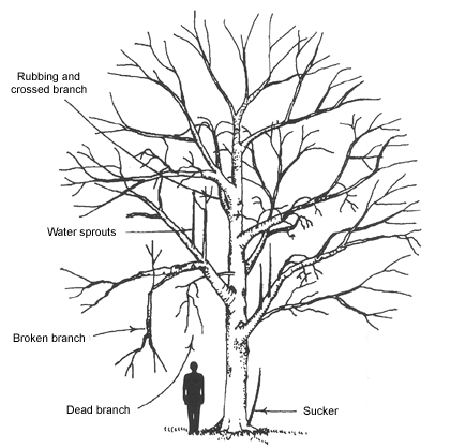
Young Trees:
Should be pruned regularly to achieve strong branching structure, maintaining a single leader when possible.
Prune cuts should be made near the base of branch, not leaving a stub.
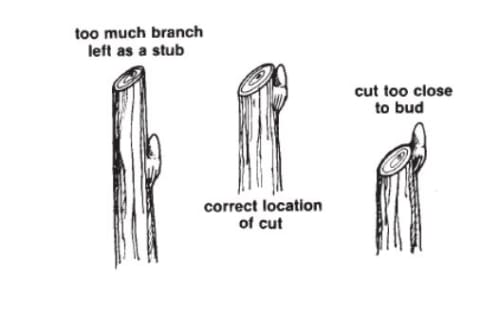
Types of Pruning
Rejuvenation:
Usually done on older shrubs that have not been maintained. A shrub can be given a new life by pruning all stems to ground level.
Shrubs that benefit from this type of pruning are;
- Forsyhthia
- Privet
- Weigela
- Spirea
Heading Back:
Used to control size of plant and to create balance in the branching structure.
Remove branches all the way back to a lateral branch or to a vital bud.
Renewal:
Similar to rejuvenation pruning but done over 3 year period. 1/3 of the oldest and overgrown branches or canes are removed. New growth emergences where branches are removed resulting in a more vigorous shrub that produces more flowers and fruit.
*Best done when plant is dormant.
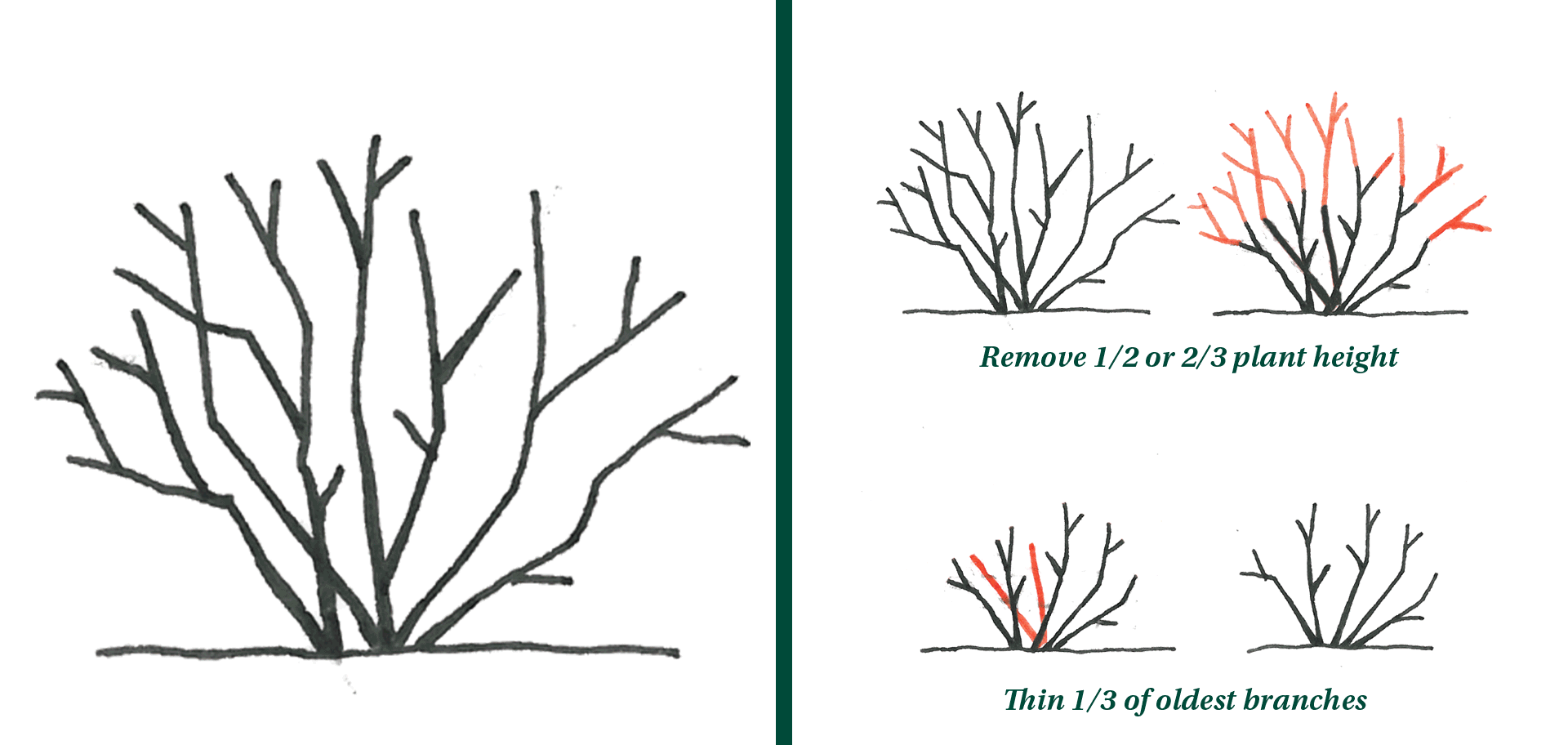
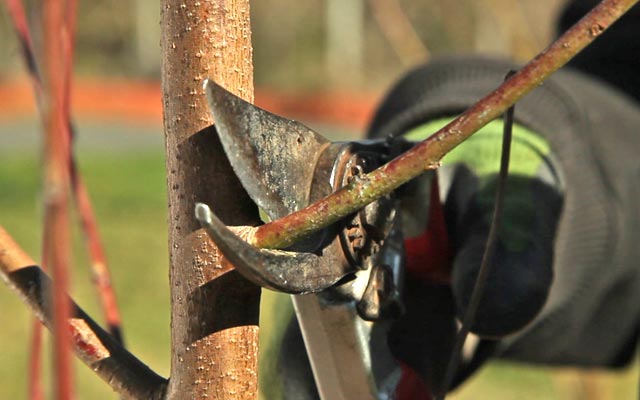
Shearing:
For formal hedges.
For optimum health of plant, bottom of hedge should be kept wider then top to allow sunlight to reach low branches.
*Best time is after new growth is complete.
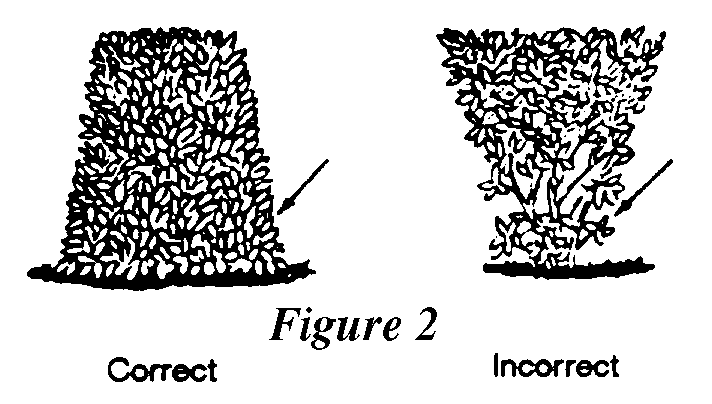
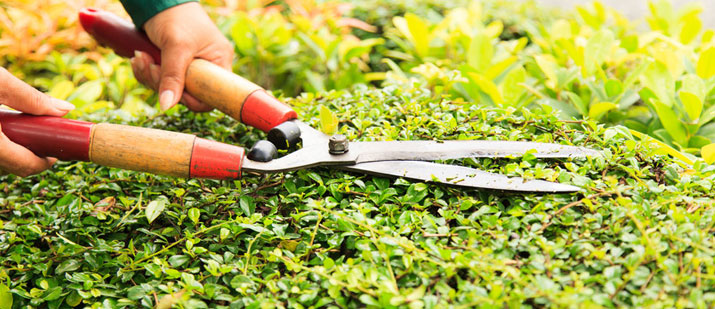
Time To Prune
Deciduous Shrubs:
Plants that flower on previous years growth should be pruned right after they bloom. These shrubs establish their flower buds the previous year and bloom in the spring.
- Forsyhthia
- Lilac
- Mockorange
- Quince
- Viburnum
- Fothergilla
Shrubs that establish their flower buds on current years’ wood should be pruned in late winter/early spring (dormancy) before buds break.
- Buckeye
- Hydrangea
- Ninebark
- Hypericum
Trees:
Winter is the best time to prune most all trees. It’s much easier to see the branching structure of the tree when there are no leaves. There is less opportunity to spread disease and attract insects.
Evergreens:
Evergreens should be pruned later during the growing season since they never become fully dormant.
Final Note:
Anytime there is diseased, dead or damaged branches, they should be removed, regardless of time of year.
Winter is a good time to prune most all trees and shrubs. If you can brave the cold, you’ll have one less project to do in the busy spring season.
Sanitize pruning tools to prevent the spread of bacteria and fungi. Rubbing alcohol works well after you’ve washed off any soil or debris.
Stefanie’s Gingko Ltd Landscaping Design and Construction Burr Ridge, IL. Serving the community for 30 years.
